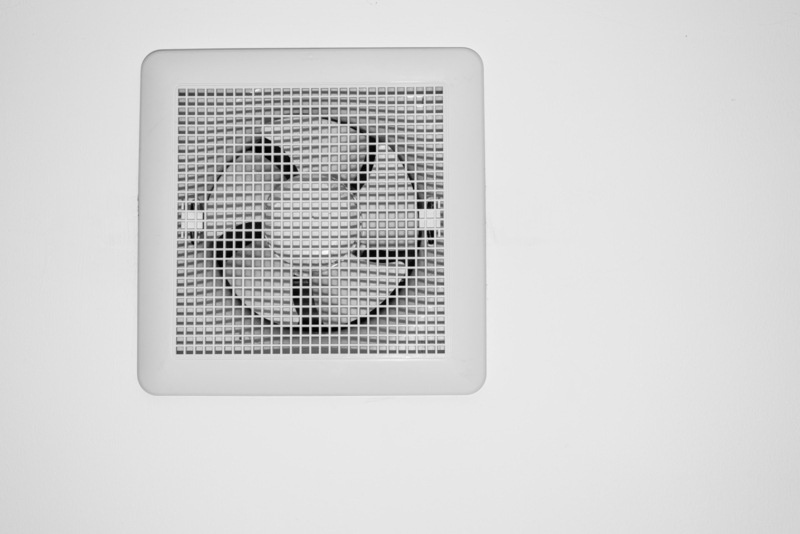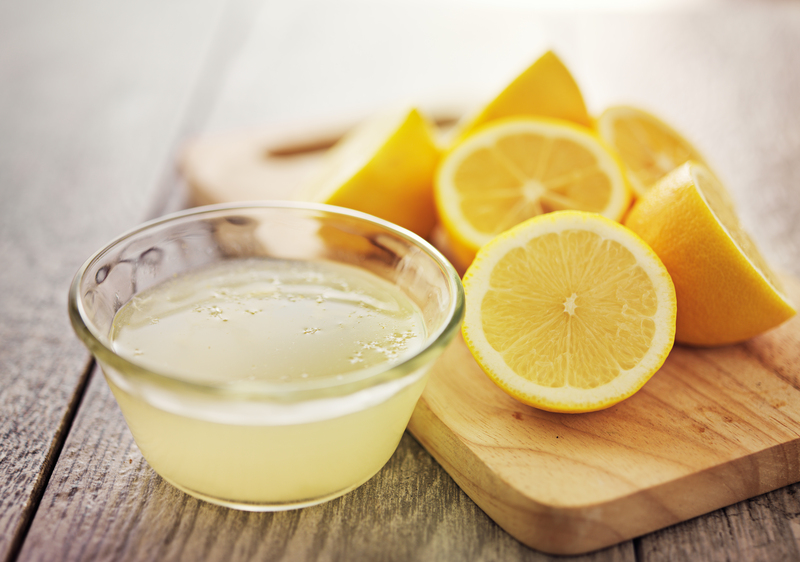The Ultimate Guide to Spotless Stovetops by Tackling Burnt-on Residue
Posted on 18/05/2025
The Ultimate Guide to Spotless Stovetops by Tackling Burnt-on Residue
Are you tired of looking at your once-gleaming stovetop now marred by unsightly, burnt-on residue and stubborn stains? You're not alone! A spotless stovetop not only makes your kitchen look pristine but also ensures a hygienic cooking environment. In this comprehensive guide, we reveal expert tips, tricks, and proven cleaning methods to restore your stovetop's shine while efficiently tackling burnt-on food residue. Let's embark on the journey to achieve a flawless stovetop with minimal effort and maximum results!
Why Spotless Stovetops Matter
Before we dive into cleaning techniques, it's essential to understand why keeping a stovetop spotless is more than just maintaining aesthetics:
- Prevents cross-contamination of foods during prep and cooking.
- Promotes appliance longevity by reducing rust and internal damage from grime build-up.
- Ensures efficiency since burnt-on residue can interfere with burners' performance.
- Boosts your kitchen's overall appeal and motivates a healthier cooking experience.
Burnt-on residue isn't just an eyesore--it can harbor germs and alter the flavor of your meals. That's why *regular cleaning* is a must for every kitchen enthusiast.

Understanding Burnt-on Residue: The Challenges
Burnt-on residue is the nemesis of clean stovetops. It occurs when food spills or greasy splatters aren't immediately wiped away and subsequently harden due to repeated exposure to heat. Over time, they can:
- Form a stubborn crust that's difficult to remove with normal wiping.
- Lead to permanent staining, especially on ceramic, enamel, or glass stovetops.
- Damage surface finish if not dealt with properly.
But fret not--knowing the right strategies can help you effectively tackle even the most persistent burnt-on messes.
Essential Tools and Products for Cleaning Burnt Stovetops
Before diving into the action, assemble your cleaning arsenal. Here's what you'll need to master the art of burnt-on stove residue removal:
- A soft sponge or microfiber cloth
- Plastic scraper or old credit card (never use metal scrapers on delicate surfaces)
- Baking soda (the ultimate natural cleaner)
- White vinegar
- Lemon juice (nature's degreaser)
- Dish soap
- Commercial stovetop cleaner (formulated for your appliance type)
- Toothbrush or small detail brush for precision cleaning
- Paper towels
- Protective gloves
Tip: Always check your stovetop manufacturer's recommendations before using any cleaning agents to prevent damage.
Step-by-Step: Removing Burnt-on Stovetop Residue
1. Switch Off and Cool Down
Safety first! Always make sure your stovetop is completely switched off and has cooled down before beginning any cleaning process. Cleaning a hot stovetop can be dangerous and may cause burns or surface damage.
2. Remove Grates and Burner Caps
For gas stovetops, take off the grates and burner caps. Soak them in a sink filled with warm, soapy water to loosen grease and burnt food. For electric or glass cooktops, skip to the next step.
3. Loosen Surface Debris
- Wipe the stovetop with a damp sponge to pick up loose crumbs and softened grime.
- If there are thick layers of burnt-on residue, place a hot, wet towel over the stained spots for 10-15 minutes. The steam will help loosen stubborn messes.
4. Sprinkle Baking Soda Over Burnt Areas
Baking soda is a gentle abrasive that won't scratch most surfaces. Sprinkle a generous layer over burnt-on spots.
5. Use Vinegar Spray for Extra Power
Mix equal parts of white vinegar and water in a spray bottle. Spray the mixture over the baking soda. You'll notice some fizzing action--this helps break down residue for easier removal.
6. Scrub Gently but Thoroughly
- Using a non-abrasive sponge or a soft brush, gently scrub in circular motions.
- Concentrate on burnt areas but avoid excessive force, especially on glass or enamel surfaces.
- For detail work around knobs and corners, use a soft-bristled toothbrush.
7. Tackle Stubborn Burnt-on Spots
If some stains persist, create a thick paste with baking soda and water, apply it to the spots, and let it sit for 20-30 minutes. Then, scrape gently with a plastic scraper or old credit card.
8. Final Rinse and Buff Dry
Wipe down the stovetop with a clean, damp cloth to remove any leftover cleaning residues. Then, buff dry with a microfiber towel for a streak-free shine.
9. Clean and Replace Grates and Caps
- Scrub the grates and burner caps using dish soap and a stiff brush.
- Rinse thoroughly and dry completely before returning them to the stovetop.
Deep Cleaning Different Types of Stovetops
Different stovetop materials require unique methods for safe and effective cleaning. Here's an overview on how to clean burnt residue from various stovetop styles:
Gas Stovetops
- Remove grates and soak them in hot, soapy water.
- Use a soft sponge and baking soda paste on the stovetop surface.
- Caution: Don't let water seep into igniters or gas orifices. Use a toothbrush to clean around tightly spaced areas.
Electric Coil Stovetops
- Lift off coil burners (if removable) and clean drip pans underneath.
- Never immerse the coils in water--wipe with a damp cloth instead.
- Use a baking soda paste on burned stains, followed by a wipe-down.
Glass and Ceramic Cooktops
- Skip abrasive tools to avoid scratching the smooth surface.
- Sprinkle baking soda, spritz with vinegar, and cover with a warm, damp towel for 15 minutes.
- Use a soft plastic scraper (specifically for glass stovetops) for really tough burnt spots.
Induction Cooktops
- Follow the manufacturer's guidelines strictly, as induction cooktops are sensitive.
- Stick to gentle cleaners and microfiber cloths.
- Avoid harsh chemicals or excessive water.
Natural vs. Commercial Stovetop Cleaners: Pros and Cons
Natural Cleaners
- Safe for most surfaces and people with chemical sensitivities.
- Environmentally friendly.
- Effective for light to moderate burnt-on stains.
- May require more elbow grease for heavy build-up.
Commercial Stovetop Cleaners
- Specially formulated for tough grime and burnt-on residue.
- Can offer quick results on severe build-up.
- Some contain potent chemicals--use with care and proper ventilation.
- Always test in an inconspicuous area first.
The Best Maintenance Habits for a Spotless Stovetop
Prevention is always better than cure. Adopt these smart maintenance routines to minimize future burnt-on residue:
- Clean spills immediately--the longer they sit, the harder they become to remove.
- Use splatter guards when frying or making sauces.
- Wipe down the stovetop daily with a microfiber cloth.
- Deep clean grates and burner caps weekly.
- Apply a thin layer of cooktop protectant (especially on glass surfaces) for ongoing shine and easier cleaning.
When to Call The Professionals
Despite thorough cleaning, sometimes stubborn burnt-on residue just won't go away, or your stovetop has become discolored or damaged. In such cases, professional cleaning and restoration might be necessary, especially for luxury or specialty stovetops. A professional has access to advanced tools and cleaning solutions beyond what home users typically possess.

Spotless Stovetop FAQs
How often should I clean my stovetop?
- Wipe down after every use for maintenance.
- Perform a deep clean at least once a week, or more often if you cook frequently.
Can I use steel wool or scouring pads on burnt-on stains?
- Never use harsh abrasives on glass, ceramic, or enamel--these can scratch or dull the finish.
- For metal grates (not coated), a gentle scouring pad is acceptable, but test a small area first.
What if I have a stubborn stain that won't budge?
- Try repeated applications of baking soda paste, allowing it to sit longer each time.
- Use a commercial cleaner formulated for your stovetop's surface.
- If all else fails, consider professional help.
Is it safe to use ammonia-based products?
- Avoid ammonia on enamel or glass stovetops. If using, ensure adequate ventilation and dilute the solution.
Can burnt-on residue be prevented completely?
- Not always, especially during high-temperature cooking or accidental spills, but prompt cleaning greatly reduces build-up.
Conclusion: Achieve and Maintain a Spotless Stovetop
Creating a sparkling clean stovetop is easier than you think when you're armed with the right knowledge and tools. Remember, the secret to effortlessly tackling burnt-on residue is early action and regular maintenance.
By following the steps in this guide, you'll not only remove the most stubborn, burnt-on messes but also preserve the finish and function of any stovetop type. Say goodbye to embarrassment over kitchen stains and hello to a glistening, hygienic cooking space you'll be proud to show off!
For more handy kitchen cleaning guides, bookmark this page and share it with friends who need a nudge toward spotless stovetops and sparkling kitchens!




